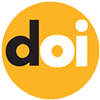Inclusion
a path to diversity constructed through language
DOI:
https://doi.org/10.18764/2447-6498.v10n1.2024.2Keywords:
Inclusion., Diversity., Discourse., Corpus.Abstract
The domain of inclusion has been a field of changes, regarding perspectives, guidelines, policies, measures and activities or projects implemented. Language reflects these changes, as it is transformed in relation to the discourse produced in this domain and it itself promotes transformations through the meanings and values it projects into action. This article focuses on the discourse produced in the field of inclusion, covering the last few decades up to the recent present. Its general objective is to apprehend the changes constructed in language regarding the presence of the concept/term “inclusion” and the relations in which it is activated. Methodologically, we resorted to the tools of Corpus Linguistics, having analysed the frequency of the term “inclusion” in three general corpora, taken as reference for contemporary Portuguese, and the frequency, collocations or co-occurrences and distinctive keywords in two specific corpora. These were built based on news concerning inclusion, one covering a very recent annual period (2022) and the other going back a decade (2012). The main results reveal the strengthening of the presence of the term “inclusion” and, above all, the appearance of “diversity” as a relevant element of the relations constructed in language in the field of inclusion.
Downloads
References
ANTHONY, L. AntConc (Version 4.0.2) [Computer Software]. Waseda University, 2022.
ASP, E. The twin paradoxes of unconscious choice and unintentional agents: What neurosciences say about choice and agency in action and language. In: FONTAINE, L.; BARTLETT, T.; O’GRADY, G. (eds.). Systemic Functional Linguistics: Exploring choice (p. 161-178). Cambridge University Press, 2013.
BARBEIRO, L. Os títulos como vetores discursivos de uma comunidade de formação. In: MUÑOZ, R. G.; PINTO, H.; DIAS, I.; ABREU, M. O.; ALVES, D. (org.). XI Conferência Internacional Investigação, Práticas e Contextos em Educação (2022). Livro de Atas (pp. 8-16). Escola Superior de Educação e Ciências Sociais, Instituto Politécnico de Leiria, 2022.
BARBEIRO, L.; CARVALHO, J. A.; BARBEIRO, C. Instituições de formação de professores como comunidades de escrita: Estudo com base nos títulos dos relatórios de mestrado. Diacrítica, 36(1), 238-259, 2022.
BOCK, Z. Multimodality, creativity and children’s meaning-making: Drawings, writings, imaginings. Stellenbosch Papers in Linguistics Plus, 49, 1-21, 2016.
DELFINO, M. C. Análise multidimensional: os números na Linguística. Cadernos de Linguística, 2(4), e474, 2021.
FEDMAN, B.; DEANE, B. (Eds.). Diversity at work: The practice of inclusion. Jossey-Bass.
FRAGA, A.; COLOMBY, R.; GEMELLI, C.; PRESTES, V. As diversidades da diversidade: revisão sistemática da produção científica brasileira sobre diversidade na administração (2001-2019). Cadernos EBAPE.BR, 20(1), 1-19, 2022.
FREIRE, S. Um olhar sobre a inclusão. Revista da Educação, XVI(1), 5-20, 2008.
HALLIDAY, M. A. K. Meaning as choice. In: FONTAINE, L.; BARTLETT, T.; O’GRADY, G. (eds.). Systemic Functional Linguistics: Exploring choice (p. 15-36). Cambridge University Press, 2013.
HALLIDAY, M. A. K.; MATTHIESSEN, C. Halliday’s introduction to functional grammar. Routledge, 2014.
HAO, J. Analysing scientific discourse from a systemic functional linguistic perspective: A framework for exploring knowledge-building in Biology. Routledge, 2020.
HASAN, R. Choice, system, realisation: describing language as meaning potential. In: FONTAINE, L.; BARTLETT, T.; O’GRADY, G. (eds.). Systemic Functional Linguistics: Exploring choice (p. 269-299). Cambridge University Press, 2013.
IMPELLIZZERI, S.; COE, I. The complex chemistry of diversity and inclusion: a 30-year synthesis. Canadian Journal of Chemistry, 99, 653–660, 2021.
JEWITT, C. Technology, literacy and learning: A multimodal approach. Routledge, 2006.
JONSEN, K.; POINT, S.; KELAN, E.; GRIEBLE, G. Diversity and inclusion branding: a five-country comparison of corporate websites. The International Journal of Human Resource Management, 32(3), 616-649, 2021.
KRESS, G.; JEWITT, C. Introduction. In: JEWITT, C.; KRESS, G. (Eds.), Multimodal literacy (pp. 1-18). Peter Lang, 2003.
KUHN, T. A design proposal of an online corpus-driven dictionary of Portuguese for university students. [Tese de doutoramento]. Universidade de Lisboa, 2017.
MARTIN, J. R.; ROSE, D. Working with discourse. Continuum, 2007.
MARTIN, J. R.; MATON, K.; DORAN, Y. J. (Eds.) Accessing academic discourse. Routledge, 2020.
O’DONNELL, M. J. A dynamic view of choice in writing: composition as text evolution. In: FONTAINE, L.; BARTLETT, T.; O’GRADY, G. (eds.). Systemic Functional Linguistics: Exploring choice (p. 247-266). Cambridge University Press, 2013.
POON-MCBRAYER, K. The evolution from integration to inclusion: the Hong Kong tale. International Journal of Inclusive Education, 18(10), 1004-1013, 2014.
RYCHLY, P. A lexicographer-friendly association score. In: SOJKA, P.; HORÁK, A. (eds.). Proceedings of Recent Advances in Slavonic Natural Language Processing, RASLAN (pp. 6-9). Masaryk University, 2008.
SCHROVER, M.; SCHINKEL, W. Introduction: the language of inclusion and exclusion in the context of immigration and integration. Ethnic and Racial Studies, 36(7), 1123-1141, 2013.
SKETCH ENGINE. Disponível em: https://www.sketchengine.eu/. Acesso em: 13 de janeiro de 2023.
WINTERS, F. From diversity to inclusion: An inclusion equation. In: FEDMAN, B.; DEANE, B. (eds.). Diversity at work: The practice of inclusion (p. 205-228). Jossey-Bass, 2014.
Downloads
Published
How to Cite
Issue
Section
License
Copyright (c) 2024 Revista Interdisciplinar em Cultura e Sociedade

This work is licensed under a Creative Commons Attribution 4.0 International License.

Este trabalho está licenciado com uma Licença Creative Commons Atribuição 4.0 Internacional.


















